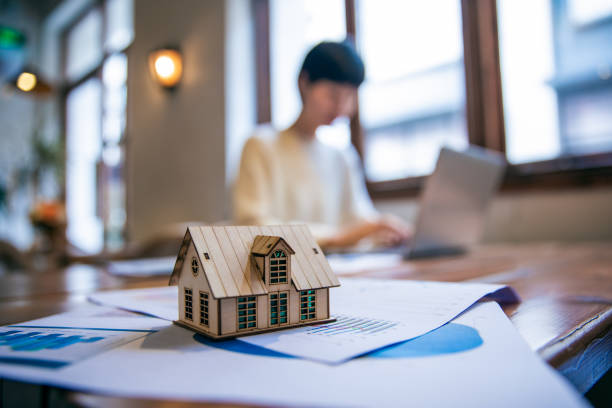Step-by-Step Guide to Getting an SLF for Commercial Buildings in Indonesia and Bali



For commercial property owners and developers in Indonesia—especially in popular business destinations like Bali—understanding how to obtain an SLF (Sertifikat Laik Fungsi or Certificate of Feasibility) is crucial. This certificate is not just a regulatory formality; it’s a legal requirement that validates your building’s safety, usability, and compliance with Indonesian construction laws.
This comprehensive guide outlines the full procedure to apply for an SLF for commercial buildings in Indonesia and Bali. Whether you’re planning to open a hotel, office, retail space, or mixed-use development, this step-by-step process will help you stay compliant and avoid future legal complications.
What Is an SLF (Sertifikat Laik Fungsi)?
An SLF is a formal certificate issued by local authorities confirming that a building is suitable and safe to be used as intended. This certificate is typically issued after the construction is completed and is mandatory before the building can be legally occupied or used for business purposes.
Commercial buildings, by regulation, must obtain an SLF to operate. Failure to secure this certificate may result in fines, forced vacating of the building, or denial of utility services such as electricity and water.
Why Is the SLF Important for Commercial Properties?
The SLF serves as evidence that your building meets all legal, architectural, structural, mechanical, and safety standards set forth by the Indonesian government. For commercial properties, the SLF is often required to:
Acquire operational licenses
Connect public utilities (electricity, water, telecommunications)
Secure insurance coverage
Avoid sanctions or legal disputes
Build credibility with customers, tenants, and partners
When Should You Apply for an SLF?
You should apply for an SLF after your building’s construction is fully completed and passes all inspections required by Indonesian law. It’s the final step in the building permit process, coming after your PBG (Persetujuan Bangunan Gedung) or Building Approval Permit.
Who Issues the SLF?
The SLF is issued by the local municipal or regency government (kabupaten/kota) where the building is located. In Bali, this typically involves the Dinas Pekerjaan Umum dan Penataan Ruang (Public Works and Spatial Planning Department).
Step-by-Step Guide to Getting an SLF in Indonesia and Bali
1. Prepare All Necessary Documentation
The first step is gathering all required documents. These include:
Copy of the PBG (Building Approval Permit)
Final as-built architectural drawings (blueprints)
Structural, mechanical, and electrical drawings
Construction supervision report
Testing and commissioning reports (plumbing, fire safety, elevators, etc.)
Building completion report from contractor
Photographs of the finished building
Identity documents of the building owner (KTP or passport for foreigners)
Land ownership documents (SHM, HGB, or lease agreements)
Business license (if applicable)
Ensure that all documents are complete, clear, and legally recognized. Missing or incorrect documents are a common cause for SLF delays.
2. Engage a Professional Consultant or Legal Service
Navigating the SLF process can be time-consuming and complex, especially for foreigners unfamiliar with Indonesian regulations. Hiring a professional consultant or law service like The Bali Lawyer can streamline the process, ensure compliance, and prevent rejection.
Our legal team has extensive experience assisting commercial clients across Bali and Indonesia. We handle document preparation, submission, liaison with authorities, and coordination of site inspections on your behalf.
3. Register on the Online SIMBG System
The Ministry of Public Works and Housing has centralized building-related permits through the SIMBG (Sistem Informasi Manajemen Bangunan Gedung) portal.
To apply for your SLF:
Access the SIMBG platform
Register your account (or let your legal advisor manage it)
Choose the SLF application section
Upload all required documents and project information
You’ll receive a registration number which you can use to monitor the status of your application.
4. Schedule a Site Inspection
Once your documents are verified, the local government will schedule an on-site inspection. A team of licensed building inspectors will evaluate:
Structural safety
Mechanical, electrical, and plumbing systems
Fire safety installations (alarms, extinguishers, exits)
Accessibility features (ramps, lifts, signage)
Sanitary and ventilation systems
Emergency systems (generators, sprinklers)
Ensure the building is fully functional and matches the approved design. Any deviation from approved plans may result in delays or refusal of SLF issuance.
5. Respond to Any Correction Requests
If the inspectors find discrepancies or missing requirements, they may issue a notice to correct the issues. You must:
Address all deficiencies
Update your documentation
Resubmit for reinspection (if required)
Working with a legal service helps reduce the risk of these delays, as professionals know what the authorities expect during evaluation.
6. Approval and SLF Issuance
Once the building passes inspection and all paperwork is validated, the SLF will be issued. You’ll receive a digital certificate through the SIMBG system and may also request a hard copy.
The SLF is valid for:
5 years for commercial buildings (renewable)
Must be renewed with a reinspection to maintain legal operation status
Ensure you maintain the certificate and follow renewal guidelines when approaching the expiry date.
SLF Renewal: What to Know
Even after obtaining the SLF, building owners must periodically renew it. The renewal involves:
Reinspection by authorities
Confirmation that the building is still in proper condition
Updated technical reports and maintenance logs
Failure to renew an SLF can lead to revocation of the original certificate and suspension of operational permits.
Common Mistakes in the SLF Process
Here are some common errors that can cause setbacks in obtaining your SLF:
Submitting incomplete or outdated documents
Starting operations before receiving the SLF
Significant deviations from approved designs
Ignoring fire safety or accessibility requirements
Not registering in the SIMBG system
Avoid these issues by partnering with a law service that specializes in property compliance in Indonesia.
Why Work with The Bali Lawyer?
At The Bali Lawyer, we provide tailored legal support for property owners, investors, and entrepreneurs in Bali and throughout Indonesia. Our services include:
Full SLF & PBG application assistance
Legal review of construction documentation
Government liaison and SIMBG registration
Site inspection coordination
SLF renewals and amendments
With years of experience in Indonesian property law, we ensure that your commercial building operates legally and securely—saving you time, risk, and penalties.
Securing an SLF for your commercial property in Bali or elsewhere in Indonesia is a critical part of the building approval and operation process. It guarantees your building is safe, functional, and legally recognized by the Indonesian government. Whether you are a hotel owner, office developer, or retail business operator, an SLF is not optional—it’s mandatory.
Let us handle the legal complexities for you while you focus on running your business. We make the process easy, fast, and compliant.
